Physical Address
304 North Cardinal St.
Dorchester Center, MA 02124
After patients have had surgery, we prefer to instruct them in a home rehabilitation program without the aid of a physical therapist. This assures us that the exercises are appropriate and the patient is less likely to be confused by more than one source of information. Despite this, the internet often interferes with this plan. It is important to be realistic about goals and explain that there is often no reward for moving ahead of the planned milestones. The guiding principle is for the surgeon to effectively educate the patient on the goals of therapy. General goals are to improve motion or strength. The exercises are kept simple. If a patient has difficulty understanding the instructions or expresses a desire for more intensive therapy in a facility, they are directed to a well-qualified physical therapist after we are confident that little harm can be done with lack of compliance. If a patient has not had surgery, we embrace the physical therapist for guidance for the patient.
Exercises can be divided by the degree of challenge they pose to the shoulder structures. They progress as follows from the least challenging to the most challenging:
Passive range of motion ( Figs. 19.1–19.5 ).
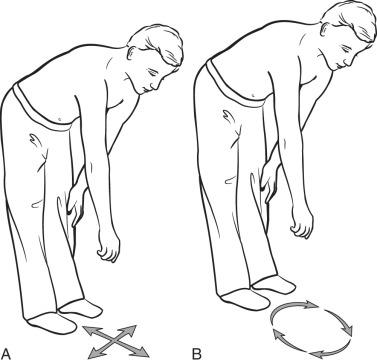
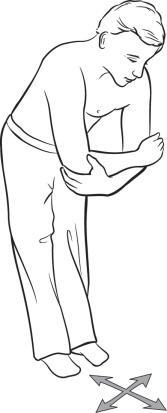
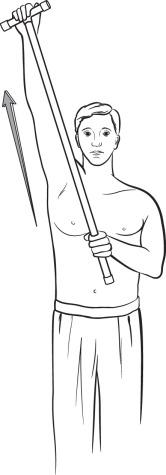
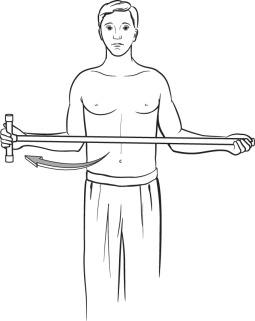
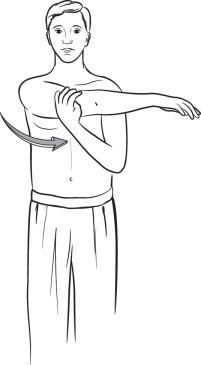
Active-assist range of motion ( Figs. 19.6–19.18 )
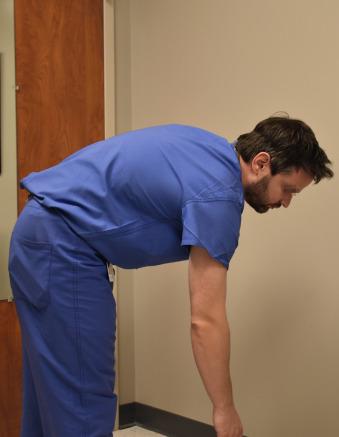
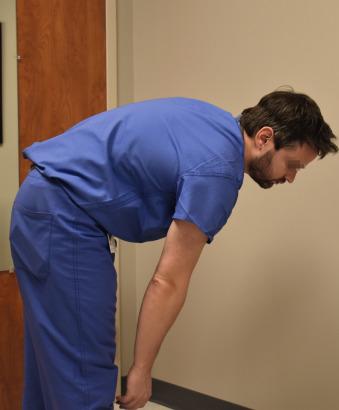
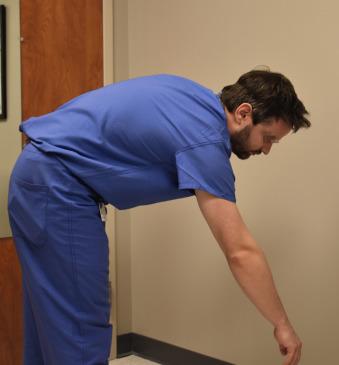
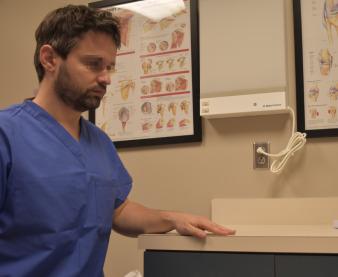
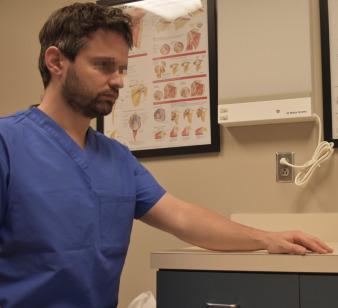
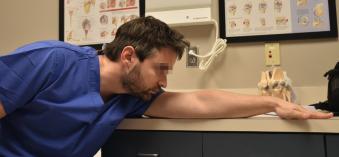
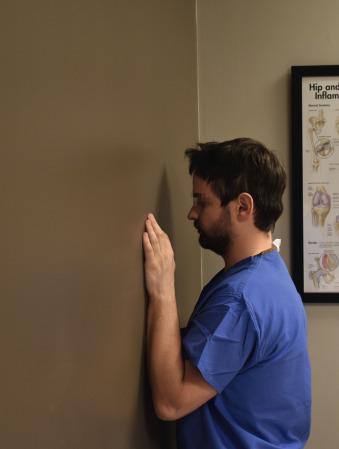
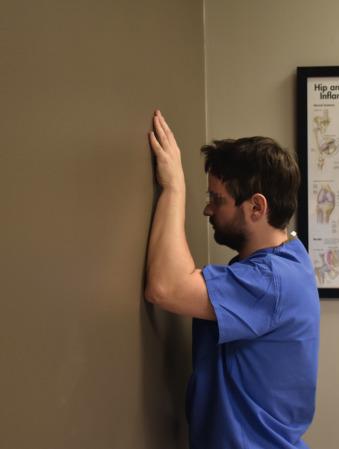
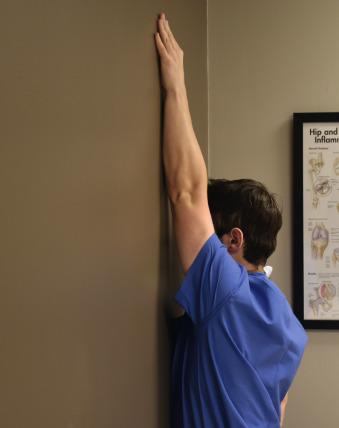
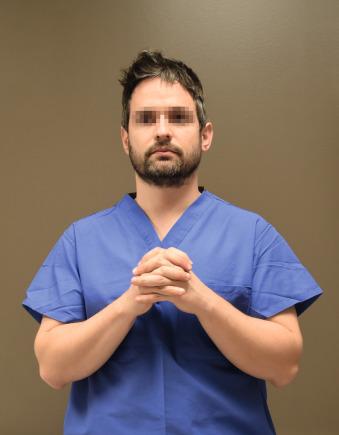
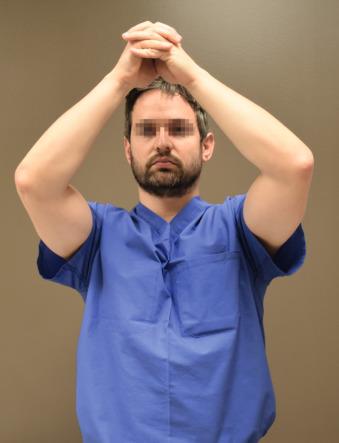
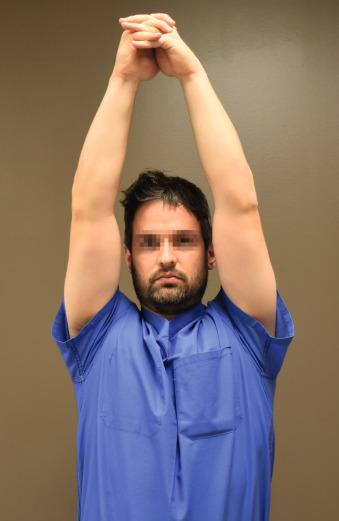
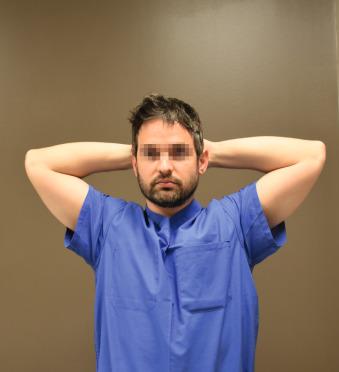
Active range of motion
Below shoulder strengthening ( Figs. 19.19–19.25 )

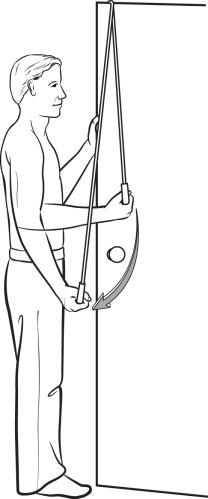
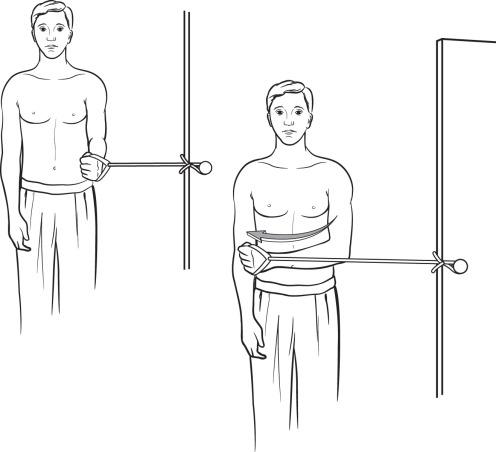
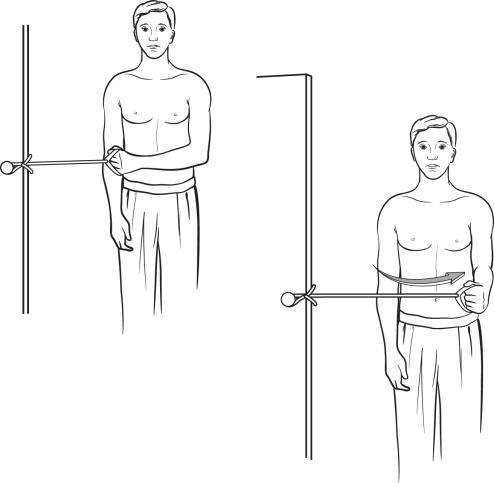

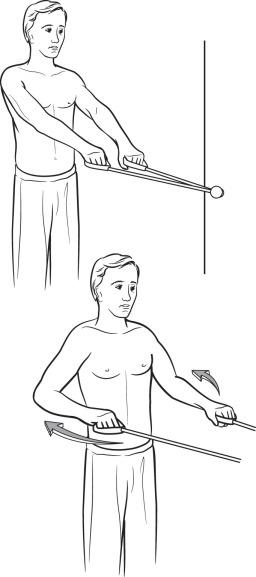
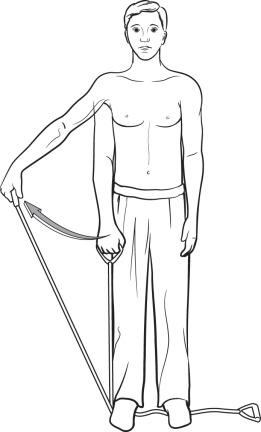
Above shoulder strengthening
We believe that true passive range-of-motion exercises are difficult to achieve with help from another individual and are even more difficult to achieve on one's own. They require a unique ability to completely relax the involved extremity. We have shown some exercises that we sometimes implement for passive motion, but, in general, we progress directly to active-assist motion.
Active-assist range of motion includes pendulums, table slides, wall walks, and placing the arm in the siesta position. Some would consider these passive exercises, but, as mentioned, patients virtually always activate their shoulder girdle muscles in order to perform these. For this reason, we have included pendulum exercises as both passive and active-assist depending on how well the patient can relax the shoulder muscles while performing them. The key for the pendulum exercise is that the body rotates, resulting in secondary (passive) arm movement, or the other arm is used to cradle the affected arm to move it passively rather than actively rotating the affected arm (see Figs. 19.1, 19.2, and 19.6–19.8 ).
As a general rule, we avoid above-shoulder strengthening altogether, except in high-demand athletes who insist on that activity. When strengthening is begun, it is helpful to start with the biceps and triceps because these exercises are usually painless and help build patient confidence and diminish fear. Surgical tubing or 1- to 5-lb dumbbells can be used for resistance. Patients can increase the weight as pain and discomfort allows. These exercises are performed three to five times per week. We generally recommend 3 sets of 10 for each exercise in a circuit training pattern.
In general, exercises may be done in many frequencies that vary based on the procedure done, the patient's pain tolerance, and whether pain is acceptable for the particular condition. This will be reviewed for the pathologies addressed in the following.
There are several potential conditions lumped under this heading. In general, procedures like a capsular release, glenohumeral débridement, or lysis of adhesions are included here. These procedures are done mainly for adhesive capsulitis, but also for ankylosis associated with prior surgery, prior fracture, or osteoarthrosis. We discourage the use of a sling, and encourage the use of oral medications to help reduce pain to allow patients to perform their exercises. Patients are referred to a physical therapist immediately postoperatively and it is explained that there will be some pain with the therapy. This pain is managed with medications prescribed by the surgeon and modalities implemented by the therapist. Passive, active-assist, and active range-of-motion exercises are the key for management. Strengthening is not important for these conditions. Aquatic therapy can be very helpful once the incisions have healed sufficiently. Patients are encouraged to try to perform some of their exercises in the shower with warm water, which is often helpful to manage the pain. Patients should initially perform exercises at least four times a day with pain guiding how often they are done.
The pendulum exercise is done with incremental increases in excursion for 1- to 2-minute periods. A 2-minute rest period may then be given between periods. All stretching exercises can be done in groups of 10 or more repetitions, holding the stretch for 20 seconds and resting for 20 seconds in between. Exercises done this way include the forward elevation stretch, the external rotation stretch, and the cross body adduction stretch (see Figs. 19.1–19.5 ). The exercises can be done as many times a day as possible and, although pain should be a guide, since maximizing motion is essential, the patient can push the envelope on their pain tolerance.
Isolated subacromial decompression is rarely done, so this is not a common scenario anymore. Patients who have an isolated distal clavicle excision may fall into this category. These are patients that had painful conditions, but no restriction of motion prior to surgery. The goal of rehabilitation is to avoid any loss of motion after surgery, without aggravating the condition that was addressed surgically. Patients are often allowed to use a sling intermittently, in public for example, for up to 1 week, but they may actively use the arm for simple activities of daily living to include personal dressing and grooming immediately. Patients start with active-assist exercises and rapidly progress to active range of motion in all planes with pain as the guide. We ask them to keep their pain below a visual analog score (VAS) at a 2 out of 10 to guide them. Strengthening exercises may begin at 6 weeks, or later if limited by pain.
Become a Clinical Tree membership for Full access and enjoy Unlimited articles
If you are a member. Log in here